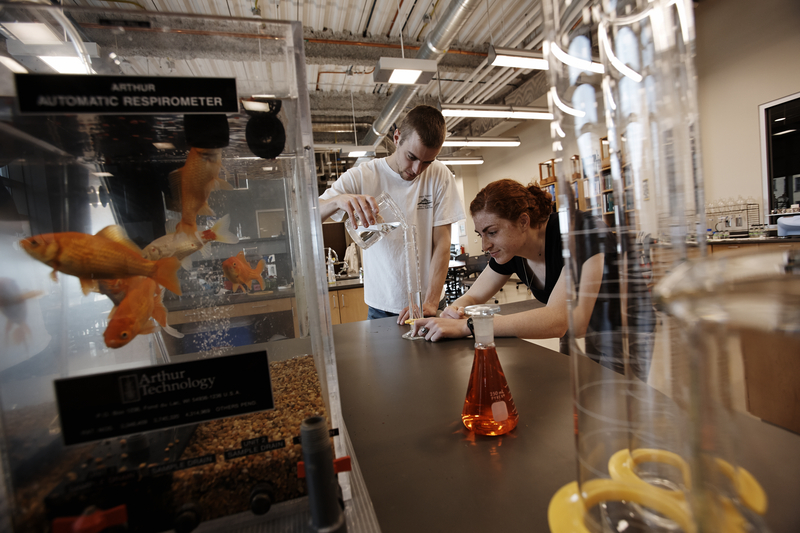Hussein Dissertation Abstract
Immobilized Phosphate-Binding Protein Systems to Remove and Recover Phosphate
Dissertation Date: July 15, 2022
Inorganic phosphorus (Pi) is a critical element for all life and a major component of our DNA backbone. Rapid growth and high crop productivity requires Pi to support global agriculture. Yet, the Pi needed for cellular growth is in short supply in nature, and Pi reserves are unevenly distributed around the world. In contrast, surplus Pi in water poses a serious pollution problem as it can cause eutrophication. Scarcity of non-renewable Pi resources combined with pollution in the form of overabundant Pi presents a phosphorus paradox. Tackling this issue is necessary and using innovative approaches targeting Pi removal to ultra-low levels with subsequent recovery for reuse applications can help.
The purpose of this research was to provide insights on potential sustainable solution to simultaneously remove and recover Pi under controlled conditions by utilizing the phosphatebinding protein PstS (PBP). PBP is naturally expressed by many microorganisms as it is responsible for Pi transport into cells under conditions of low surrounding Pi levels. High affinity and selectivity towards Pi even at low concentrations is a superior advantage for removal and recovery efforts addressing the phosphorus paradox. Utilizing PBP as an adsorbent offers a potential sustainable treatment option for Pi removal and recovery from water/wastewater.
This research investigated three prospective immobilized PBP systems to evaluate their performance for Pi removal and recovery. Surface-displayed PBP on the outer membrane of E. coli was designed, characterized, and tested for Pi capture and release. Increasing temperature and ionic strength increased phosphate release by 20% and 50%, respectively. Both acidic and basic pH conditions promoted Pi release from cells induced to over express PBP. Surface-displayed PBP systems increased Pi release under controlled conditions compared to periplasmic PBP overexpressed in the periplasm and control cells without PBP overexpression.
Micro-structured immobilized PBP (PBP-NHS resin) was tested in a fixed-bed column configuration. Highly selective Pi separation was observed, and there was no significant decline in the column’s performance over three consecutive cycles in either synthetic solution or tertiary wastewater, substantiating PBP-NHS resin’s reusability. Resin capacity was unaffected by competing anions, whereas a comparative LayneRTTM ion exchange column experienced a 20% drop in capacity in the presence of other anions.
A PBP-loaded iron oxide particle adsorbent (PBP-IOPs) was shown to improve Pi adsorption capacity. The PBP-IOPs offered rapid Pi adsorption kinetics, with near-complete removal in less than 5 min. The Pi adsorption isotherms showed that adsorption was best described as a monolayer adsorption mechanism (Langmuir). Higher Pi removal was observed at room temperature, low ionic strength, and slightly acidic conditions. The PBP-IOPs released 99% of total adsorbed Pi whereas IOPs alone (without immobilized PBP) released only 12%, such that PBP-IOPs offer enhanced potential for Pi recovery.



